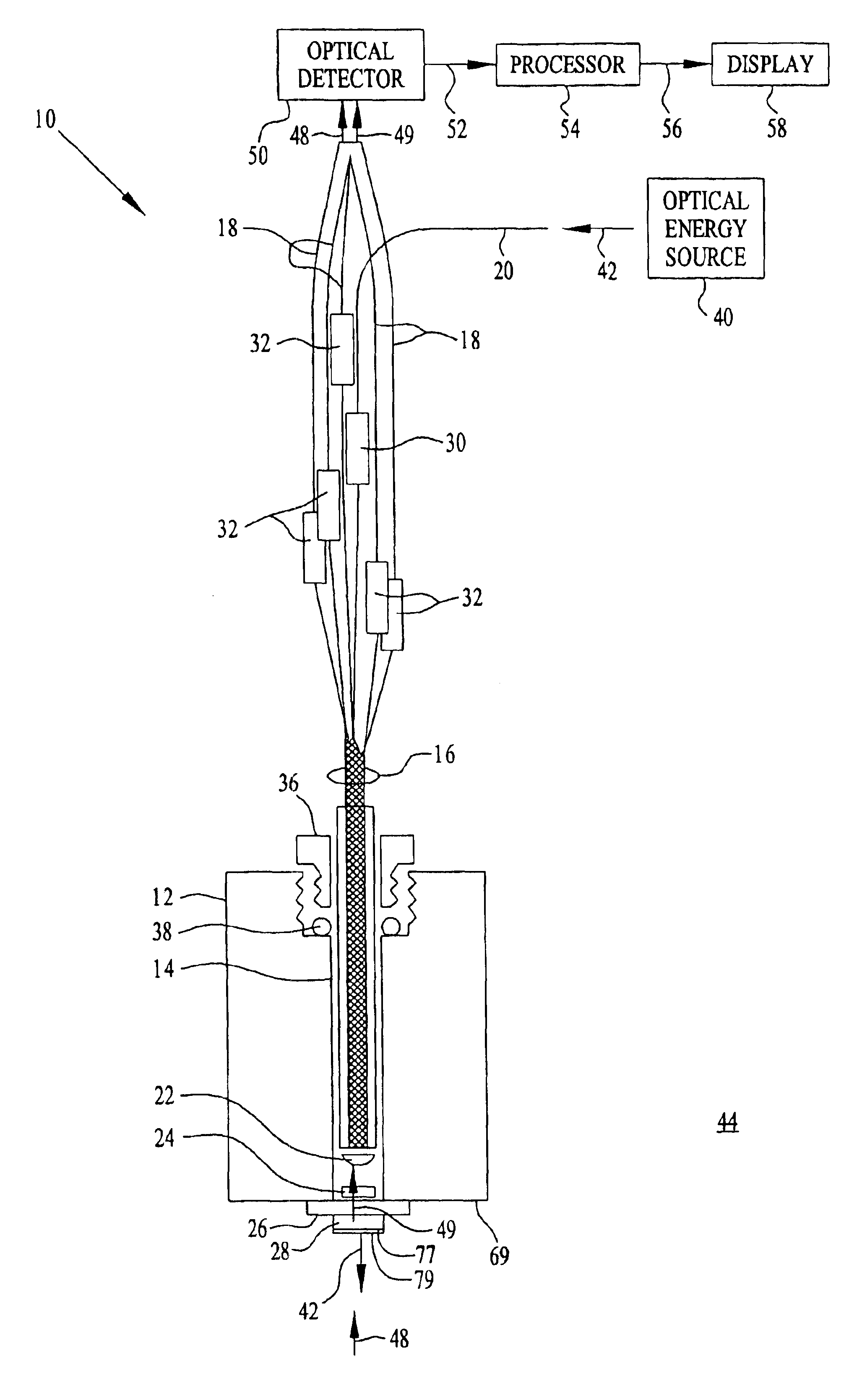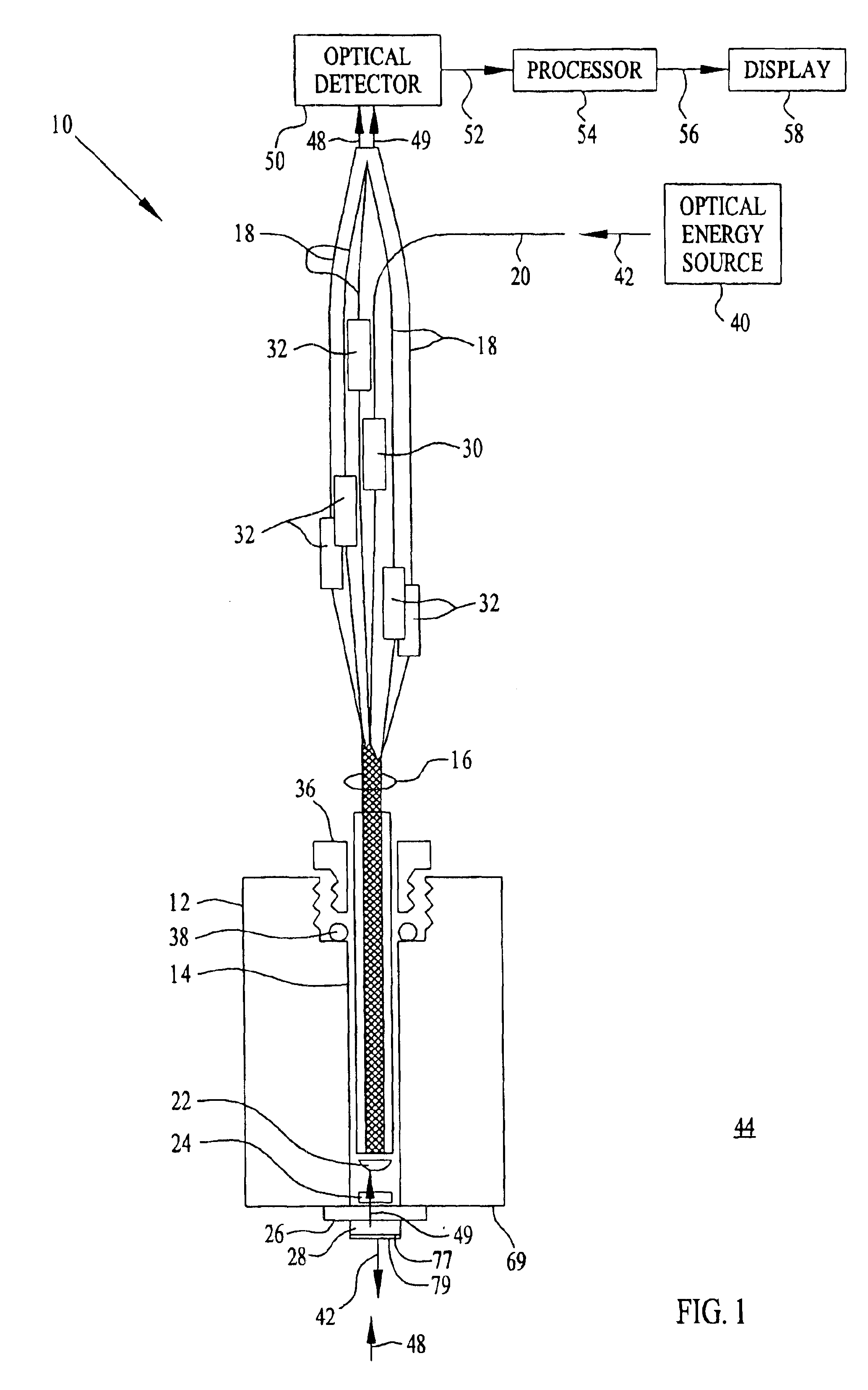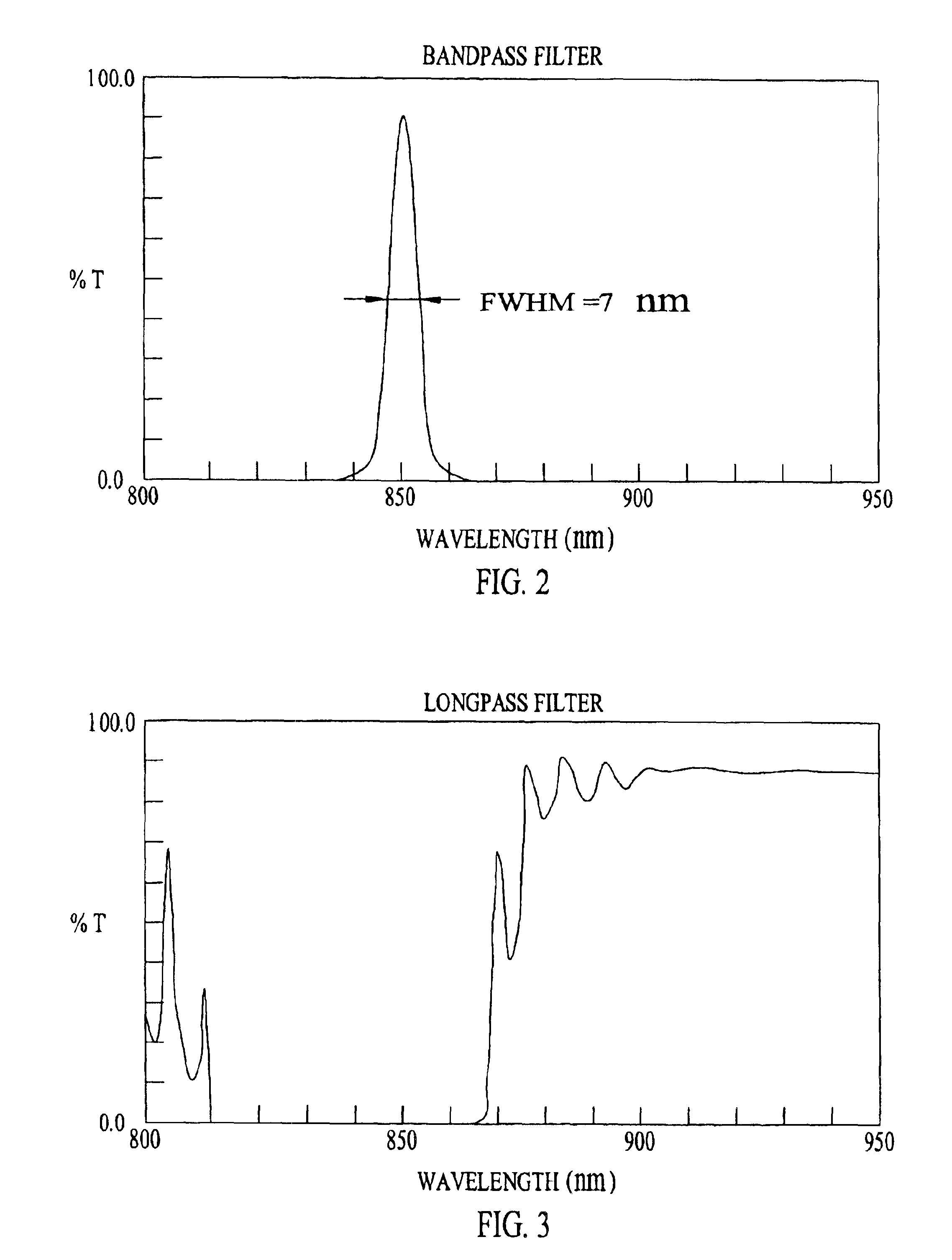Sensor for performing surface enhanced Raman spectroscopy and method for achieving same
a raman spectroscopy and sensor technology, applied in the field of raman spectroscopy, can solve the problems of raman scattering, surface enhanced raman spectroscopy (sers), insensitive technique, etc., and achieve the effects of enhancing raman scattering, enhancing raman scattering, and minimizing the effect of raman scattering
- Summary
- Abstract
- Description
- Claims
- Application Information
AI Technical Summary
Benefits of technology
Problems solved by technology
Method used
Image
Examples
Embodiment Construction
[0015]Referring to FIG. 1, the present invention is directed to a sensor 10 for performing surface enhanced Raman spectroscopy. The sensor 10 includes a sensor body 12 having a throughbore 14 in which is positioned a fiber optic bundle 16 comprised of collection optical fibers 18, excitation optical fiber 20, collimating lens 22, focusing lens 24, window 26, and a Surface Enhanced Raman Spectroscopy (SERS) structure 28 that is described in commonly assigned U.S. patent application Ser. No. 09 / 593,675, filed 14 Jun. 2000, and entitled A METAL AND GLASS STRUCTURE FOR USE IN SURFACE ENHANCED RAMAN SPECTROSCOPY AND METHOD FOR FABRICATING SAME, incorporated herein by reference. Filter 30 is optically aligned and spliced to excitation optical fiber 20; and an optical filter 32 is optically aligned and spliced to each of collection optical fibers 18. Bushing 36 is threaded into sensor body 12 to secure the fiber optic bundle 16 within the bore 14 of the sensor body 12. An O-ring 38 may be ...
PUM
| Property | Measurement | Unit |
|---|---|---|
| Wavelength | aaaaa | aaaaa |
| Optical properties | aaaaa | aaaaa |
Abstract
Description
Claims
Application Information
 Login to View More
Login to View More - R&D
- Intellectual Property
- Life Sciences
- Materials
- Tech Scout
- Unparalleled Data Quality
- Higher Quality Content
- 60% Fewer Hallucinations
Browse by: Latest US Patents, China's latest patents, Technical Efficacy Thesaurus, Application Domain, Technology Topic, Popular Technical Reports.
© 2025 PatSnap. All rights reserved.Legal|Privacy policy|Modern Slavery Act Transparency Statement|Sitemap|About US| Contact US: help@patsnap.com



